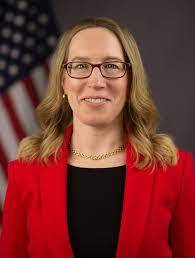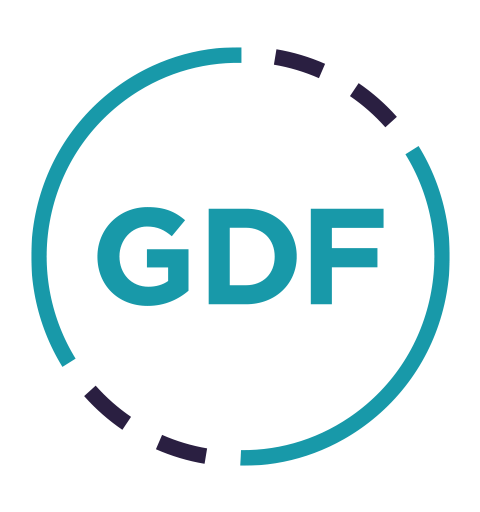Commissioner Peirce interview
The need for regulatory clarity: Commissioner Hester Peirce joins GDF Board Member Jeff Bandman for a fireside chat
The Commissioner has stressed that the views expressed were her own and do not necessarily reflect the US Securities and Exchange Commission’s (SEC) position.
The US Securities and Exchange Commission’s (SEC) Hester Peirce has always taken an open and well-informed approach towards innovation in the digital asset space. She joined GDF’s Board Member and co-founder Jeff Bandman to discuss the recent developments in crypto regulation in the US.
Considering the pace of the industry, Commissioner Peirce is keen to move the SEC away from enforcements and towards clear rules on digital assets. “Chair Gensler has a lot of energy, as we saw with his implementation of a regime for swaps as chairman of the CFTC. He is not one to let time slip by.” Although Peirce initially came out with a statement noting the absence of rules that would provide clarity for digital assets, Chair Gensler has recently announced the SEC’s focus on developing frameworks geared towards investor protection.
Commissioner Peirce also discussed her dissent from the enforcement actions taken against Blotics, formerly Coinschedule. The issue was not necessarily with the enforcement action itself, but with the lack of clarity given on the decision. Coinschedule is a UK-based company which listed digital token offerings available to purchasers in the US. Though the SEC had concerns that some of these tokens were considered securities, they were not clear on which tokens this applied to.
“Enforcement actions don’t provide enough clues,” said Peirce, stressing that people want to know how the Howey test is being applied in the digital asset space. The application of the Howey test is described by the SEC as depending “on facts and circumstances”, leading to some confusion in the community. “There is a broader plea for us as an agency to do something to provide more clarity over when something is a security and when it is not.”
Lawyers were also asking for clarity on the subject, so as to be able to provide concrete guidance to their clients on when their product crosses the line into a securities offering. “Clarity allows people to build things that can actually be used. People want to engage on this.”
Regarding the SEC’s decision in December 2020 on the safe harbour for special purpose broker-dealers, Bandman mused that the current approach towards cryptoassets is reminiscent of the early days of the internet, when many considered business in the ‘real-world’ to be entirely separate from an online presence. Online and offline businesses are now intertwined, and we must consider that digital assets will have a similar trajectory. This observation resonated with Peirce, who noted, “We need to pay attention because this will be part of every firm going forward in some form. We need a way to integrate it with traditional securities, and find a way to make it compliant while protecting consumers and the stability of the financial system.”
Peirce discussed her suggestions for the Safe Harbour 2.0, and using GitHub to receive helpful feedback from the community. “We now have a head start with the input. There is work to be done… but it is gratifying to see how willing people are to think through these issues.” In using GitHub for feedback, the Commissioner noted that the revisions can reflect the expertise of the agency, as well as the ecosystem. “We received input from people who might not even think to engage in other contexts. Not only can their voices be heard, but we really want them to be heard.”
Bandman and Peirce went on to discuss stablecoins, and the debate surrounding the drive for a Central Bank Digital Currency (CBDC). Peirce highlighted that the design of the stablecoin itself is the most important question for the regulators, and will determine whether or not this falls into the SEC’s jurisdiction.
“The growth of stablecoins has been stunning to watch. It is a reminder that for some people who are focused on CBDCs, the private market can develop its own alternative.” Not only do people have concerns with the privacy elements of a government-run CBDC, but the private sector alternative may allow for stronger innovation.
“The innovation is exciting to see. Regulators may at times see innovation as a negative because it is a challenge to the current situation. We do have to check the regulatory impulse to assume that something new is inherently bad.”
When Bandman asked if she had much influence over the Senate’s position on digital assets, Peirce made her position clear: her role is to implement the decisions made by the Senators and Congressmen and women who are ultimately responsible to the American people. Fortunately, many of those working on these issues in the Senate are familiar with the space.
Bandman and Peirce also turned to exchange-traded funds (ETFs), which have gained much attention of late with several companies seeking approval from the SEC on their bitcoin ETFs. Peirce reiterated her view that the SEC seems to be holding crypto ETFs to a standard different from what has been applied to other ETFs that have gone forward. Separately, Chair Gensler announced in his comments on 3 August that he expects companies will file for ETFs under the existing 1940 Investment Company Act, which regulates mutual funds and closed-end funds, and which “provides significant investor protections”.
On the borderless nature of digital assets, Peirce highlighted that digital assets are not the only sector to face the challenges of regulatory global consistency. US regulators are working to coordinate with other jurisdictions on the development of regulatory frameworks, and she hopes that the Safe Harbour will address the hesitations of those avoiding growing their customer base in the US.
Peirce commented on striking the correct balance with regulating the industry. In response to an audience member who had a skiing photo as his profile picture, she compared it to the winter sport, showing that although people may ski where they like and how they like, it is also helpful to have marked slopes with difficulty ratings. Similarly, a clear regulatory framework could provide innovators the freedom they need to build, without looking over their shoulders at what lines they may be crossing: “There is a balance between too much and too little [regulation].”
Always armed with rich insights and generous with her opinions, Commissioner Peirce continues to display her commitment to embracing innovation within the financial sector. In doing so we can ensure that rules are developed with meaningful compliance in mind, enabling the growth of safe, sustainable markets.


Watch more from our Global Leaders series:
GDF Global Leaders With Albert Forkner, State Bank Commissioner, Wyoming Division Of Banking
GDF Global Leaders Webinar With Greg Foss, Executive Director – Strategic Initiatives, Validus Power Corp

